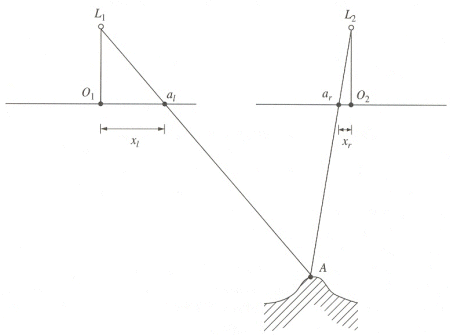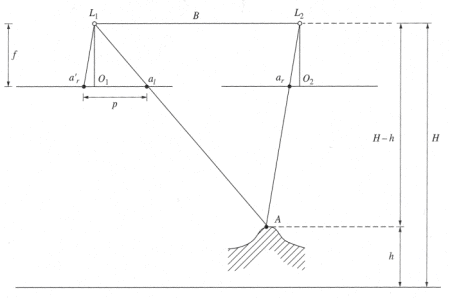How to Calculate the Height Out of a Parallax
If two vertical aerial photographs are taken consecutively along a flight line, with some overlap of coverage between the two, the height can be calculated.
In the following figure, a point A is imaged onto the two frame photographs at al and ar, with the x coordinate origins at the principal points (or perspective centre points, i.e. the sensors), O1 and O2.
The parallax at point A is expressed by:
The parallax at point A can be shown graphically by transferring the right image point to the left image as shown in the next figure. We can use the parallax to obtain information about the height of point A. Observing the similarity between triangles (L1, L2, A) and (L1, a1, a1) we may infer that:
or
This confirms what we have already stated intuitively, that parallax and proximity are inversely related. Large parallax implies that the object is closer to the sensor, i.e. the object has a great height, while small parallax implies that the object is more distant, i.e. the object has a lower height.
Parallax and proximity are inversely related. Large parallax implies close proximity (meaning object’s height is great) while small parallax implies a distant object (meaning object’s height is low).


